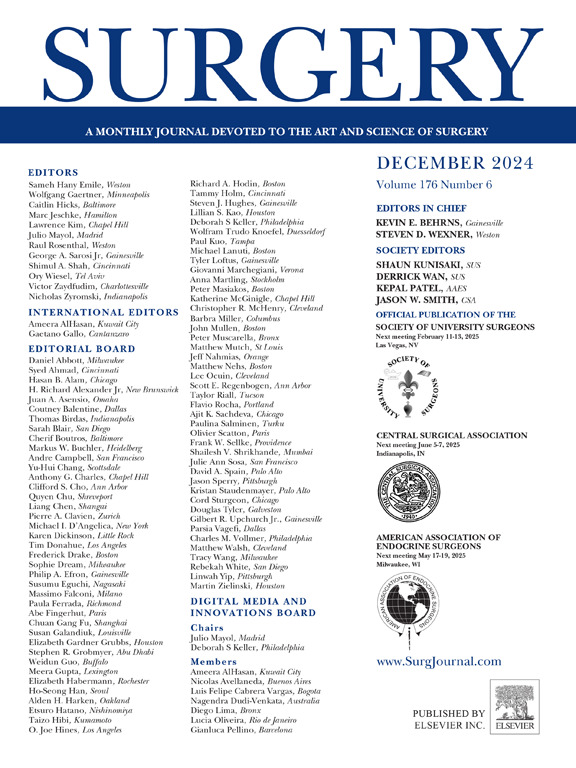The evolution of surgical skills simulation education: Robotic skills
IF 3.2
2区 医学
Q1 SURGERY
引用次数: 0
Abstract
Robotic surgery is now widely used after the introduction and increase in popularity of the da Vinci Xi Surgical System 25 years ago. Starting with urology, it has expanded into most major surgical specialties, with millions of robotic operations performed each year. With this growth comes the need to educate and train surgeons on its use. Robotic surgery introduces unique cognitive, psychomotor, and team-based skills not used in open and laparoscopic techniques. These demand creation of curricula on the basis of comprehensive and validated educational frameworks, similar to the Fundamentals of Endoscopic Surgery and Fundamentals of Laparoscopic Surgery programs, to train surgeons. Although programs like the Fundamentals of Robotic Surgery have been developed, they focus most on basic skills. Beyond curricula for these and more advanced skills, how performance is assessed is equally critical. Beginning to fill this gap are the Global Evaluative Assessment of Robotic Skills, Robotic Objective Structured Assessment of Technical Skills, and Robotic Ottawa Surgical Competency Operating Room Evaluation assessment tools. Continued development and improvement in curricula and assessment must persist, particularly as new technologies develop rapidly. Sophisticated features of newer robotic systems including objective performance indicators, augmented reality, virtual reality, artificial intelligence, and machine learning are gaining pace and are positioned to expand robotic surgery, and robotic surgical simulation education, even further over the next 25 years.
求助全文
约1分钟内获得全文
求助全文
来源期刊

Surgery
医学-外科
CiteScore
5.40
自引率
5.30%
发文量
687
审稿时长
64 days
期刊介绍:
For 66 years, Surgery has published practical, authoritative information about procedures, clinical advances, and major trends shaping general surgery. Each issue features original scientific contributions and clinical reports. Peer-reviewed articles cover topics in oncology, trauma, gastrointestinal, vascular, and transplantation surgery. The journal also publishes papers from the meetings of its sponsoring societies, the Society of University Surgeons, the Central Surgical Association, and the American Association of Endocrine Surgeons.
 求助内容:
求助内容: 应助结果提醒方式:
应助结果提醒方式:


